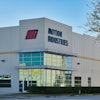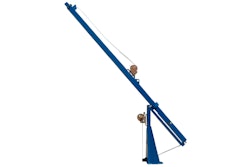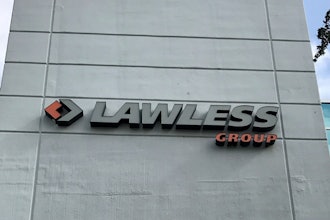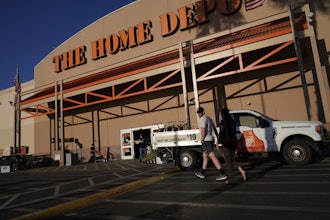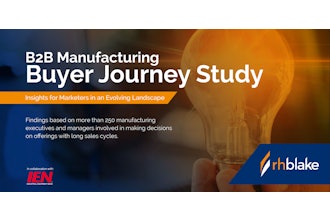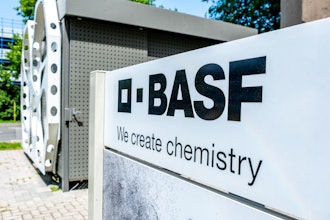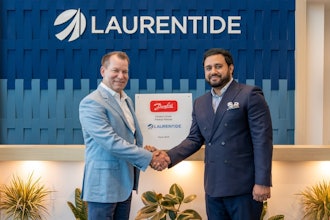The top performing industrial distributors in the U.S. are getting closer to their customers to better understand their product and value-added service needs. They are leveraging advanced analytics to identify and prioritize cost reduction and revenue growth opportunities and are using the latest technologies like mobile, social, cloud, and big data to innovate and delight their customers.
Following are some strategic investments that we have seen our customers make recently to ensure sustainable and profitable growth while looking to differentiate their businesses as they go head-to-head with the likes of AmazonSupply.com and other big box e-tailers.
Good Distributors Sell Products and Services. Great Ones Deliver Experiences
The well-known consumer brands like Disney or Starbucks, that we all know and love, are standout brands because of the fact that they deliver unique “customer experience ” and that they do so consistently day-in and day-out. In fact, this notion of delivering unique customer experience is fast being adopted in the B2B world. And the top industrial distributors have taken note of it too. They are getting an early jump on it and are keen to deliver their unique brand of customer experience. One area that the top distributors are focusing on, and it fits really well, is on the e-commerce side of business - a customer experience that clearly impacts the bottom line. Today’s e-commerce has greater traction as well because the modern platforms that run it are capable of creating the ultimate customer touch point, connecting and matching buyers and sellers online, especially as they are properly integrated with all the mature, enterprise-class systems like ERP and CRM, and even newer initiatives like mobile, social and big data.
The B2B buyer is, after all, a consumer in their private lives and they have come to expect the same richness in experience from their suppliers as they would from buying on Amazon or any other leading online websites. This consumerization of B2B offers huge new opportunities for leading industrial distributors as they can now help provide a seamless experience and solve problems, at the business moment, for the B2B buyers - whether they are out on the field or in a warehouse or at a branch location. If this is done right, everyone wins. You earn greater revenue. B2B buyers are happy and want to come back. They’ll even become your strongest advocates. For example, a MRO distributor in the mid-west conducts 25 percent of its business on hybris ecommerce platform by providing a great experience of problem solving, ease-of-use, and lightning-fast service to their customers.
Join the Networked Economy
Besides having ecommerce sites the leading distributors- large and small – are also capitalizing on the advantages and opportunities provided by the Networked Economy, with Ariba Network as a key enabler.
The top distributors have done a lot in the last few years to squeeze out the inefficiencies from their operations. They have leaned out their inventories, outsourced processes, and stretched their supply chains around the globe. Now every distributor is more dependent upon its external partners. And it’s critical they share information and processes to align and coordinate their business decisions. By being part of the business network they are able to extend their processes beyond the four walls of their organization and are able to buy and sell more than ever before. For instance, there is a business joining the Ariba Network every two minutes. That’s one more potential buying or selling opportunity just waiting to be discovered. It's a simple matter of network effect. Per McKinsey & Company 1, “Networked enterprises are 50% more likely than their peers to have increased sales, higher profit margins, gain market share, and be a market leader.”
A great example is a metalworking and MRO products distributor that has automated their order and fulfillment on the Ariba Network, and is achieving significant gains, including 50 percent higher conversion rates and 60 percent lower order-taking costs.
Know thy customers with customer stratification analytics
Customer centricity and building closer relationships is top of mind for the C-suite. Dr. Barry Lawrence of Texas A&M University, a well-known thought leader in our industry, always speaks passionately about the importance of Customer Stratification and Cost-to-Serve analysis. According to him, Customer Stratification is the process of classifying customers into groups based on four factors – sales volume, gross margin, customer loyalty and cost-to-serve 2. He has developed a framework based on his team’s work with hundreds of industrial distributors. The names of customer classifications he has used in his framework - Core, Opportunistic, Marginal and Service-Drain Customers are catchy too. Now imagine, being able to see this classification of all your customers on your monitor or your smart phone or tablet. As it is often said, a picture tells a thousand words!
It turns out that not many distributors actually do this type of analysis even though most of the data is already there in their ERP and CRM solutions. Those who are doing it have seen a significant improvement in their net margins and, importantly, have gained better understanding of their Core and Opportunistic customers to serve them even better.
Modern technology allows distributors to do the number crunching and analytics to surface the Customer Stratification dashboards to their sales associates in real time. This ability fundamentally changes the way the sales teams work – i.e. how they strategize, collaborate and build deeper relationships with customers. The Sales teams end up developing a number of pragmatic and actionable sales strategies for all their customer types – from how much time they ought to be spending with each type to how to nurture a marginal customer into the core category to how to have a dialog with a customer who has a high DSO. Sales teams armed with such insight have a higher win rate while ensuring they achieve profitable sales growth for their enterprise.
Stop profit leakages by effective chargeback management
The vendor chargeback process for many distributors determines whether or not they are profitable for the year. No doubt then why top distributors are so keen in investing in this area.
To manage chargebacks effectively, distributors need to track the order-to-cash cycle for each sales order, and all the line items within it, to enable accurate claims accruals, provide proof of sales documentation and achieve smoother dispute-free claims settlement.
After automating their chargeback processes some of the well-known brands in industrial distribution have seen some dramatic results:
- Claims recovered in 1-2 days vs. the average days chargeback outstanding of 30 days
- +100% gain in claims as automation and insights point to additional cost recovery opportunities
- Boost in productivity and gain in trust with manufacturers as there is higher visibility for all parties
- Meet internal controls and legal compliance with full audit trail capabilities
The chargeback process brings together the chiefs of finance, sales and IT closer together and it sets them up to achieve higher levels of financial performance for their organizations.
Going forward prudent technology investments have to be the underpinning of any distributor’s strategy. This way they can carve out a value-added and differentiated role for themselves in the value chain. Our customers also have a choice of deployment options. They choose whether its on-premise, hybrid or pure cloud solution based on their own unique situation and company strategy. With these strategic investments come the opportunities to achieve profitable growth and gain un-fair competitive advantages in the marketplace.
1 Source: “The Rise of the Networked Enterprise”, December, 2010, McKinsey: Jacques Bughin and Michael Chui
2 Source: “Customer Stratification: Best Practices for Boosting Profitability”, Book by: F. Barry Lawrence, Ph.D., Pradip Krishnadevarajan, Senthil Gunasekaran
Neetin Datar leads Industry Marketing at SAP America. He has over 20 years of enterprise software experience in ERP, Warehouse Management, E-Commerce, Global Trade, and Distribution markets. He has been with SAP since 1994 and is passionate about technology and its use by distributors to run better. Follow him on Twitter @neetin_datar.

